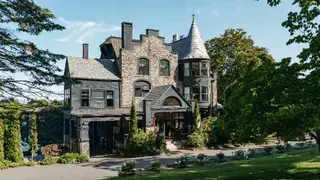July 21, 2017
Richmond's Confederacy Statues Spur Soul-Searching
Sarah Rankin READ TIME: 4 MIN.
When a French artist's statue of Gen. Robert E. Lee arrived by train in Richmond in 1890, thousands helped haul the enormous pieces to what is today the city's grandest boulevard. Many took home pieces of the rope they used as souvenirs, so beloved was Lee as a top Confederate commander and native Virginia son.
Well over a century later, cities across the U.S. are removing Confederate statues and other symbols critics see as offensive reminders of slavery and racism. But not Richmond, which has no such plans for taking down Lee's towering statue - or others like it - along its Monument Avenue.
Mayor Levar Stoney recently announced he thinks the monuments should stay put but appointed a commission to study adding historical context, likely with new signs or new statues. His measured approach has been praised by many residents, who consider removing the statues impractical, or nearly impossible. But it's also raised debate about whether the city that was the capital of the Confederacy and a major hub in the domestic slave trade is appropriately acknowledging the darkest chapters of its past.
"This new mayor, who we had hoped would break with the traditions of the past, has stated he doesn't think that the statues should come down. ... And that is out of step with what is happening throughout the South, and it's an embarrassment, frankly," said Phil Wilayto, a community organizer and one of the plan's most outspoken opponents.
When Stoney, who is black, announced the commission last month, he said he was personally insulted by the Confederate figures but believed telling the whole truth about their history was the best place to start.
"Equal parts myth and deception, they were ... a false narrative etched in stone and bronze more than 100 years ago - not only to lionize the architects and defenders of slavery - but to perpetuate the tyranny and terror of Jim Crow and reassert a new era of white supremacy," the 36-year-old, first-term mayor said.
The monuments were erected between 1890 and 1919, well after the war's 1865 finish. The Reconstruction era was over, and an interpretation of the war historians call the Lost Cause was emerging that romanticized the South and de-emphasized slavery.
Today, Lee's 21-foot (6-meter) statue rises atop a pedestal nearly twice that tall on a grassy circle. Elsewhere on the broad avenue lined with mansions and tony apartments are statues to Confederate President Jefferson Davis, generals J.E.B. Stuart and Thomas "Stonewall" Jackson and Confederate naval officer Matthew Maury. People often picnic or walk dogs along the avenue's grassy median, and despite occasional small acts of vandalism, there have been few physical protestations against the monuments in this liberal-leaning capital city.
Many suggest a willingness to let the statues remain has something to do with their location on the fashionable street, where some of the wealthiest residents reside and tourists visit. And any fight to remove them could be long and costly. Nearby Charlottesville recently decided to remove a Lee statue from a park. The city now faces a lawsuit that invokes a state law prohibiting the removal of war memorials, and the Ku Klux Klan recently rallied there.
B. Frank Earnest, heritage defense coordinator for the Sons of Confederate Veterans, which filed the Charlottesville lawsuit, said the statues are war memorials and have nothing to do with racism. Putting up a plaque that says as much would be just as bad as taking the statues down, he said.
Perhaps Stoney doesn't want a Charlottesville-type fight at a time he's dealing with rising crime, a troubled school system and other issues, some say.
Henry Marsh III, the city's first black mayor, also noted Richmond is unique for its centrality to the Civil War. Ringed by some of the bloodiest battles, the city lay largely in blackened ruins after the Confederacy's defeat.
"Richmond's been around a long time, and I think those statues are going to be around a long time," said Marsh, who backs Stoney's plan. "And I think if they are, they need to represent the full picture of Richmond."
That's an effort the city has been wrestling with for decades.
Richmond is working to memorialize its former slave trading hub in the Shockoe Bottom district, though far more slowly than Wilayto and other critics would like. Lawmakers recently agreed to help fund restoration of two black cemeteries that have become overgrown, unlike thousands of Confederate graves the state helps keep up each year.
A statue of black tennis hero Arthur Ashe, a Richmond native, was erected on Monument Avenue in 1996 and one of African-American entrepreneur Maggie Walker, the first woman to charter a bank in the U.S., was dedicated in downtown this month.
The Rev. Benjamin Campbell, a civic leader who supports the mayor's plan, said it would be cheap to think the city would resolve questions of history just by moving or tearing down a few statues.
If Richmond can do a better job of telling all its history, he said, "Monument Avenue becomes a strange artifact of a period of history that we have renounced."





